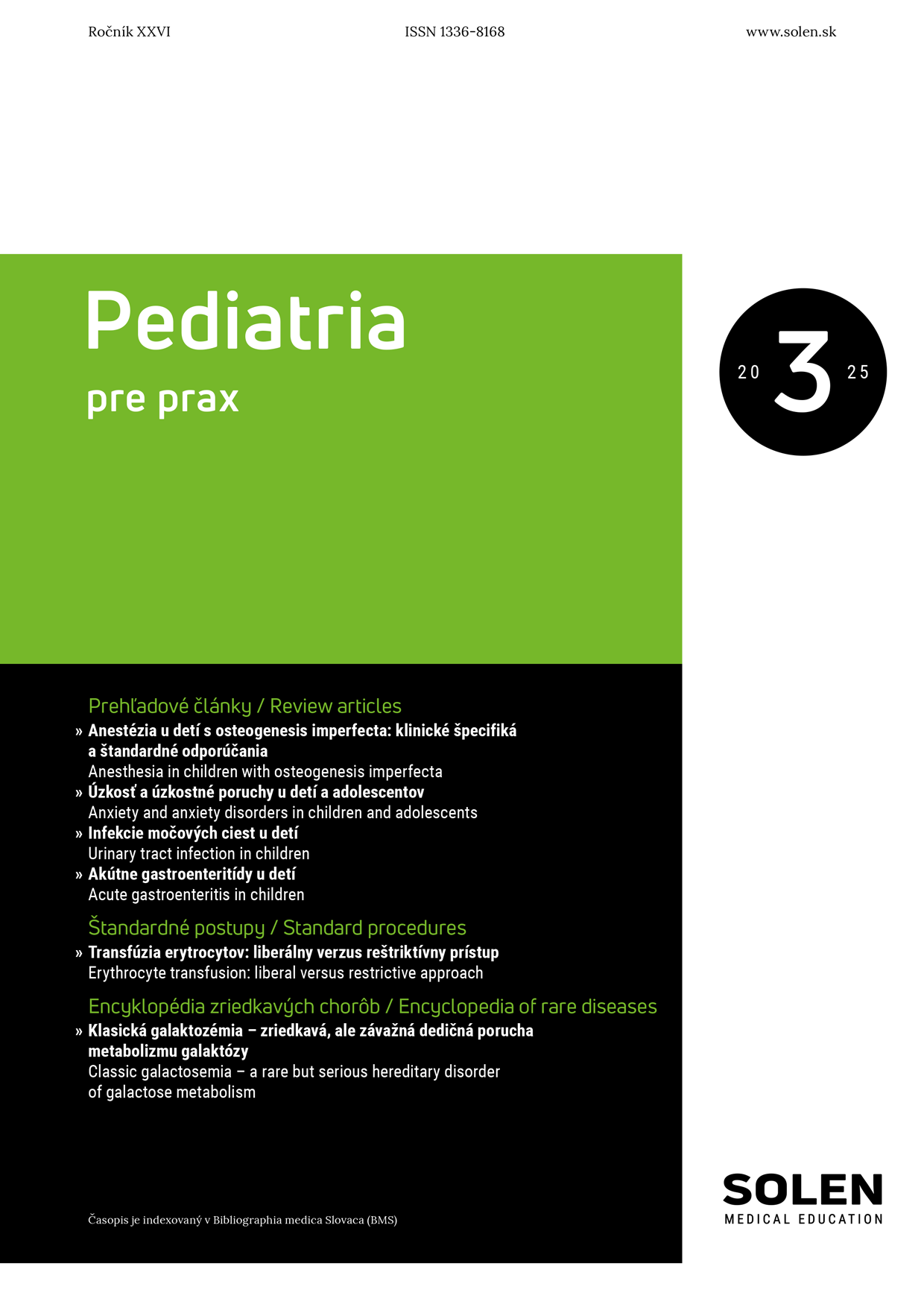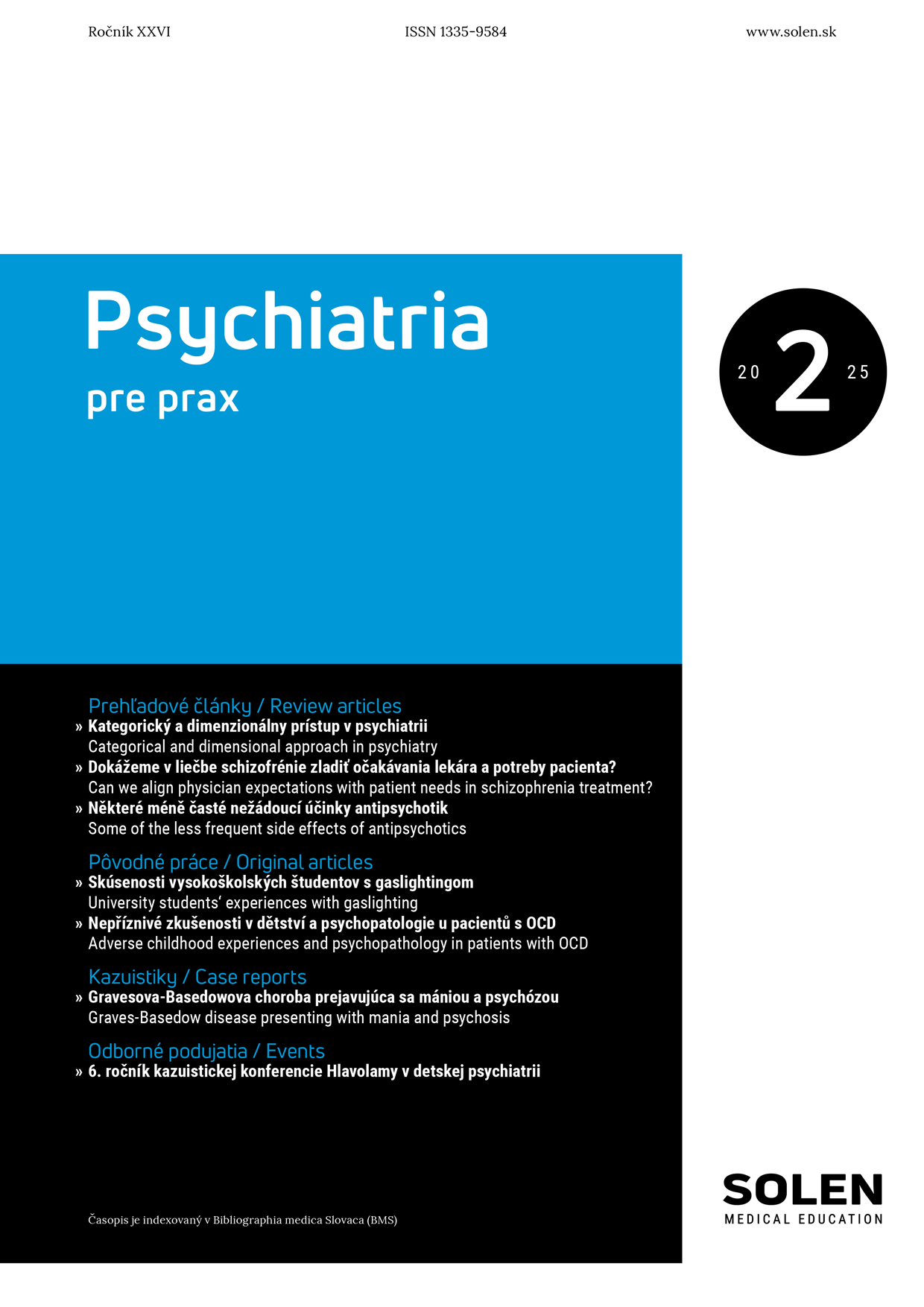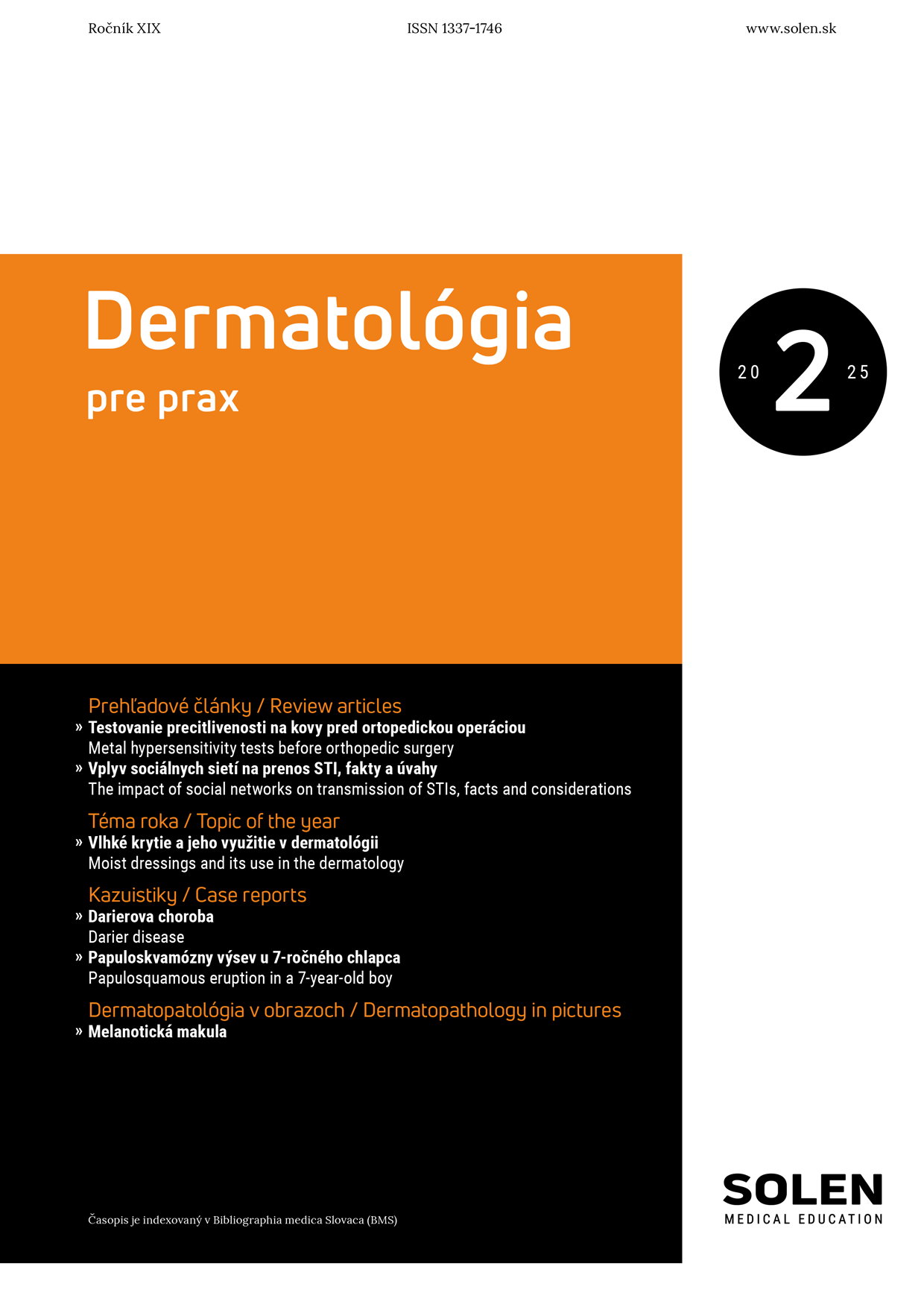Dermatológia pre prax 3/2017
Naevus flammeus – morfológia, etiopatogenéza a terapia
MUDr. Ján Baumgartner, prof. MUDr. Mária Šimaljaková, PhD., MHA
Naevus flammeus (NF) je kožná a slizničná kapilárna malformácia postihujúca 0,3 – 0,5 % populácie. Zvýšený obsah hemoglobínu v patologickom vaskulárnom tkanive podmieňuje charakteristické vínovočervené sfarbenie lézií v ektatických kapilárach a postkapilárnych venulách. Prejavy sa pozorujú už pri narodení, na rozdiel od infantilných hemangiómov spontánne neregredujú. Progresívne zmeny NF vedú k tmavnutiu, zhrubnutiu a prípadne až k výrazným mutilujúcim zmenám kožného reliéfu charakterizovaných vznikom nodulov. Lasery a zdroje nekoherentného svetelného žiarenia založené na princípoch selektívnej fototermolýzy predstavujú v súčasnosti hlavnú metódu liečby. Fotodynamická terapia, ako aj farmakoterapia antiangiogénnymi preparátmi sa klinicky testujú ako adjuvantné terapeutické metódy.
Kľúčové slová: naevus flammeus, kapilárna malformácia, cievny névus, hemangióm, vaskulárne lézie, laser
Capillary malformation (naevus flammeus) – morphology, etiopathogenesis and therapy
Naevus flammeus (port wine stain – PWS) represents a type of capillary malformation affecting 0.3-0.5% population. The characteristic colour is caused by elevated amount of hemoglobin in PWS lesions composed of ectatic capillaries and postcapillary venules. The lesions of PWS are present at birth with no spontaneous regression in contrast with infantile hemangiomas. Progressive changes characterized by darkening, skin thickening and/or nodule formation may lead to disfigurement and psychosocial embarrassment. Lasers and intensive non-coherent light sources based on the principles of selective phototermolysis represent the main current treatment modality for PWS. Photodynamic therapy and/or pharmacotherapy by antiangiogenic medicaments are clinically tested as adjuvant treatment modalities.
Keywords: naevus flammeus, capillary malformation, port-wine stain, vascular nevus, hemangioma, vascular lesions, laser

















